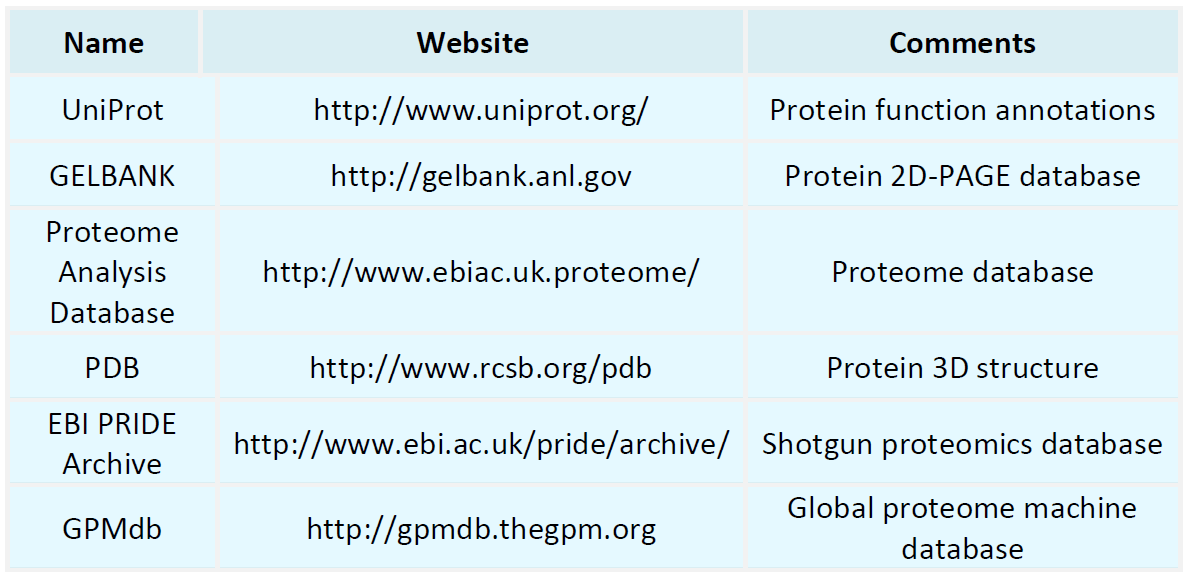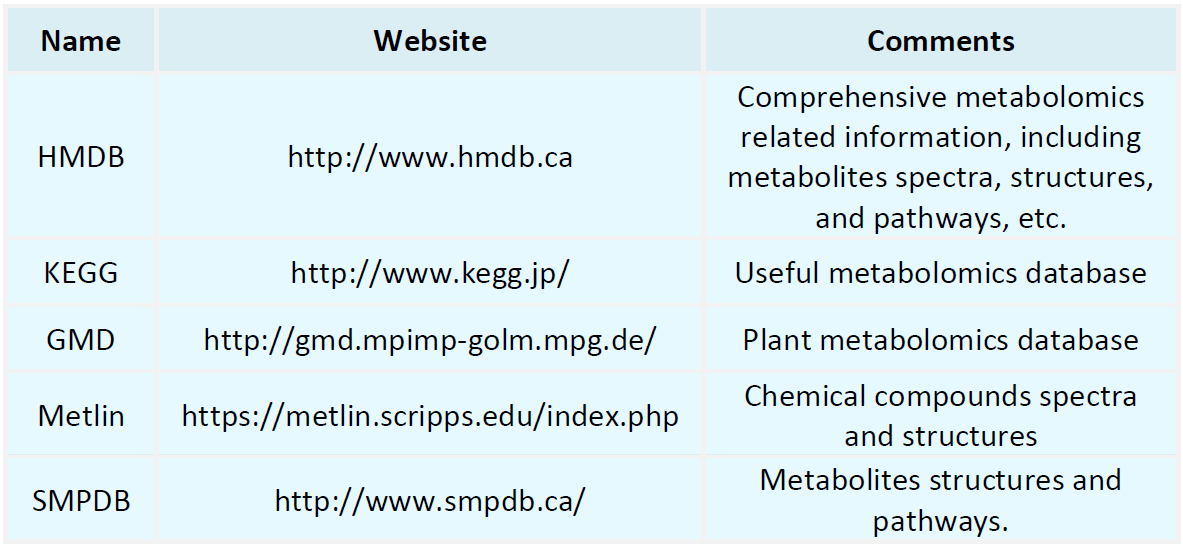Resources
Proteomics Databases

Metabolomics Databases

-
• Protein Primary Structure Analysis
Protein primary structure analysis is a fundamental step in protein research, focusing on determining and understanding the amino acid sequence of proteins. As essential functional molecules within organisms, proteins perform a wide range of biological activities. Their primary structure, the specific order of amino acids, is crucial for elucidating their function and properties. Analyzing this structure provides insight into the protein's conformation, function, and interactions with other molecules.......
-
Thermal shift analysis (TSA) is a technique employed to evaluate protein stability and ligand-binding characteristics by assessing protein conformational changes at varying temperatures. Typically, proteins denature upon heating, which induces measurable structural changes. Thermal shift analysis (TSA) leverages the interaction between fluorescent dyes and proteins; the fluorescence intensity of these dyes changes upon binding to denatured proteins. By examining the temperature-dependent fluorescence ......
-
• Protein Primary Sequence Analysis
Protein primary sequence analysis is a vital component of proteomics research, involving the identification and interpretation of the amino acid sequences that make up protein molecules. Proteins consist of amino acids linked by peptide bonds, and their primary sequence denotes the linear order of these amino acids. Analyzing this sequence not only aids researchers in understanding the fundamental structure of proteins but also provides insights into their functions, folding mechanisms, and roles in b......
-
Antibiotic analysis is a crucial experimental technique used to detect, quantify, and identify various antibiotics and their residual concentrations across different environments and sample types. This technique finds wide-ranging applications. In food safety monitoring, the issue of antibiotic residues in food products like meat and dairy, due to the extensive use of antibiotics in livestock farming, poses potential health risks to consumers. Antibiotic analysis effectively identifies these residues,......
-
• Protein Interaction Screening
Protein interaction screening is a technological approach widely used in biological research to identify and analyze interactions between proteins. Proteins, as the executors of life activities, form complex networks through these interactions, thereby regulating various cellular functions, including signal transduction, metabolic pathway regulation, and cell cycle control. This approach is not only crucial for understanding the fundamental principles of life but also has important applications in stu......
-
• Amino Acid Sequencing Techniques
Amino acid sequencing techniques refer to methods used to determine the amino acid sequence of a protein by analyzing its composition and arrangement. These techniques are widely applied in fields such as proteomics, disease diagnosis, drug development, and agricultural science. In proteomics, amino acid sequencing techniques help reveal the structure and function of proteins, providing insights into the molecular mechanisms that govern biological processes. In disease diagnosis, accurate amino acid s......
-
• Identifying Protein-Protein Interactions
Identifying protein-protein interactions aims to recognize and confirm both physical and functional contacts between proteins. Proteins perform essential cellular functions and regulate biological processes by forming complex interaction networks. Protein-protein interactions (PPIs) are crucial in signal transduction, metabolic regulation, cell cycle control, immune responses, and more. Understanding PPIs aids not only in basic biological research but also in elucidating biological functions and disea......
-
The antibody mapping is a dataset that uses high-throughput technologies to systematically analyze and document antibodies. It illustrates the distribution, characteristics, and functions of antibodies across various biological, tissue, cellular, and molecular contexts. Originating from the biological concept of an "atlas," it systematically presents the organizational and functional relationships of biological macromolecules. The construction and application of the antibody mapping significantly adva......
-
• Antibody-Drug Conjugate Characterization
Antibody-drug conjugate characterization refers to the analytical techniques used to evaluate the structure, stability, purity, and functionality of ADCs. ADCs are targeted therapeutics composed of monoclonal antibodies, linkers, and small-molecule cytotoxic drugs. By leveraging the high specificity of antibodies, ADCs precisely deliver cytotoxic drugs to cancer cells, significantly improving the efficacy of anti-tumor treatments while minimizing off-target toxicity. Given the complex structure and di......
-
Antibody CDR analysis is a vital technique in antibody engineering, vaccine development, and immunological research. The CDR refers to the variable regions of the antibody molecule, primarily responsible for the specificity of antigen binding. Each antibody consists of two heavy chains and two light chains, with three CDRs (CDR1, CDR2, and CDR3) in the variable regions of both chains. CDR3 is considered the critical region determining the antibody's affinity and specificity. Through antibody CDR analy......
How to order?







